When Italy locked down the entire country in early March in response to the coronavirus pandemic, shuttering businesses, closing borders to foreign visitors and largely confining 60 million people to their homes, major cities transformed into ghost towns virtually overnight.
Not only were the usual tourist haunts deserted — the Trevi Fountain in Rome, the Rialto Bridge in Venice — but even neighbourhoods normally frequented by locals became disturbingly quiet.
Now, however, two months since lockdown began to ease, some of the basic rhythms of normal life are beginning again. In Venice, the Piazza San Marco is no longer empty. Beaches around the country are opening for the summer holiday season. Professional soccer is back — although without fans packing into stadiums.
It’s quite a turnaround for a country that, after initially underestimating the seriousness of the coronavirus outbreak, became the epicenter of the pandemic in Europe, standing as a warning to the United States and other nations about the consequences of inaction.
The toll has been significant. Since March, Italy has recorded nearly 250,000 coronavirus cases, and 35,000 people have died. The number of infections and deaths has fallen rapidly in recent weeks, however. On Thursday, Italy’s Civil Protection Agency reported just 296 new coronavirus infections, most of them in the hard-hit Lombardy region, and 34 deaths. That’s a sharp contrast with the U.S., where the number of coronavirus cases has been rising sharply in more than 20 states.
Having managed to flatten the infection curve sufficiently, Italy began lifting its lockdown restrictions in May and reopened its borders to visitors from other EU countries at the beginning of June.
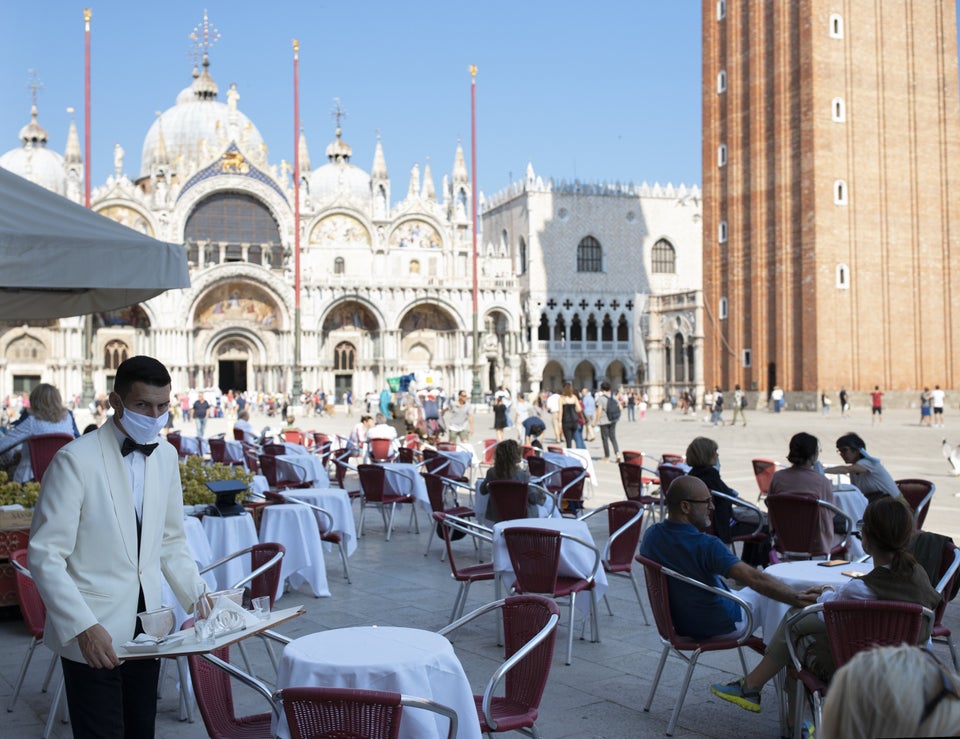
For a country whose economy is heavily reliant on tourism — the sector accounts for 13% of Italy’s GDP and the nation welcomed 60 million visitors in 2019 — there have been some encouraging early signs. In Venice, when the Doge’s Palace reopened two weeks ago, approximately 1,000 tickets were sold on opening day, and visitors waited in a line that stretched the length of three American football fields in order to enter. In a city famous for its masks, face coverings are now compulsory in the museum, hand sanitizer dispensers have been installed throughout the building, there is a one-way flow of visitors, and there are limits on the number of people who can be in a room at the same time.
“It’s a very strong emotion, like the first day of school,” Maria Cristina Gribaudi, president of the Venice Civic Museums Foundation, told Agence France-Presse. “There were people queuing at 8 this morning.”
Elsewhere in the city, tourists took gondola rides, sipped drinks at outdoor cafes and browsed souvenir shops, all of which have reopened for business.
However, while all the landmarks remain, the coffee is as strong as ever and local produce is just as inviting, tourism and the Italian way of life have fundamentally changed.
Italy’s national tourism agency forecasts that the number of visitors from abroad this year will be about 55% less than in 2019, and the tourism sector stands to lose approximately 23 billion euros ($25 billion) compared to last year.
As a result, tourism in Italy will likely become “greener and slower,” according to Giorgio Palmucci, the president of the national tourism agency.
“Post-COVID crisis, there will be an opportunity to tackle the issue of sustainability and a new way of proposing and experiencing tourism,” Palmucci told The Local.
In this vein, the tourist slowdown is also bringing some potential upsides and spurring innovation. Venice has suffered for years from overtourism, and locals are hoping the coronavirus crisis will provide an opportunity to develop a more sustainable future for their city — one in which residents and artisans can afford to live and work there, rather than one in which the city is overrun by visitors who spend their time taking photos and buying tchotchkes before getting back on cruise ships.
Since the lockdown has been lifted, protesters in Venice have been holding demonstrations against a new pier that would bring more boats and tourists to the city.
“This can be a working city, not just a place for people to visit,” Andrea Zorzi, one of the protest organizers, told The New York Times. “It can be normal.”
It’s a unique paradox for a city in which 75% of the residents are connected to tourism. Venice is “the city that dies of tourism and dies without tourism,” Venice resident Ottavio Di Brizzi wrote in a post-lockdown postcard for HuffPost Italy.
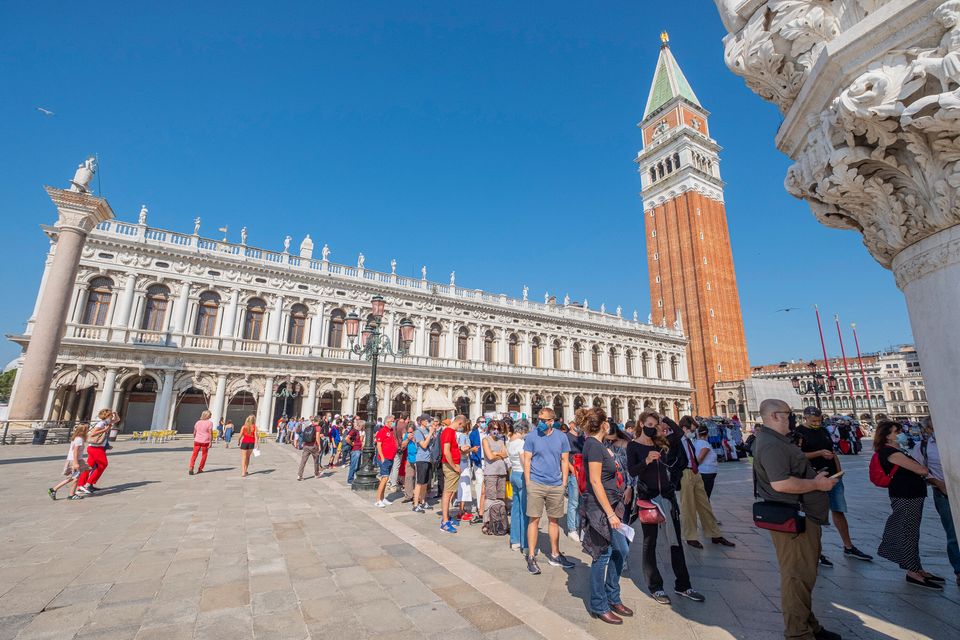
In Rome, too, Italians have enjoyed the rare opportunity to visit popular attractions like the Sistine Chapel and the Colosseum without having to battle the usual tourist hordes. Before coronavirus, the Colosseum welcomed 20,000 visitors a day, 70% of whom were foreign tourists. Now it’s estimated that 1,600 at most will enter daily.
In Florence, 4.5 million people visited the Uffizi Galleries last year to view its collection of Renaissance masterpieces from the likes of Leonardo Da Vinci, Michelangelo, and Botticelli, ranking it among the most popular museums in the world.
Now, however, no more than 450 people are allowed inside the museum at any one time — half the usual capacity — and all must wear masks and maintain a social distance of at least 6 feet.
But the reduced numbers make for a more enjoyable museum-going experience. Rather than jockeying and jostling to see a famous painting like Botticelli’s “The Birth of Venus,” visitors can browse the galleries more freely and spend more time looking at the art.
“It will also be possible to experience a new form of visiting museums, a much more profound and relaxed way to visit museums compared to what we’ve seen before: the hurried museum visit to take a number of selfies and snapshots,” the Uffizi’s director, Eike Schmidt, told The Wall Street Journal. “People will just be able to take in much more.”
It’s not just major cities that are working to transform themselves in the wake of the coronavirus pandemic, however. Across the country, medieval hill towns — which have been struggling for years with crumbling infrastructure and chronic depopulation — have been investing in maintenance improvements and tourism campaigns, positioning themselves as an attractive alternative to crowded cities.
“The lockdowns have helped us appreciate the importance of green spaces, and we understand we are no longer dependent on inner-city offices for our work,” Stefano Boeri, an architect, told The Guardian. The villages “will allow for a slower form of tourism. … Personally, I want to visit places where I can interact with the locals, immerse myself in their heritage and see the farms that produce the food that arrives on my plate.”
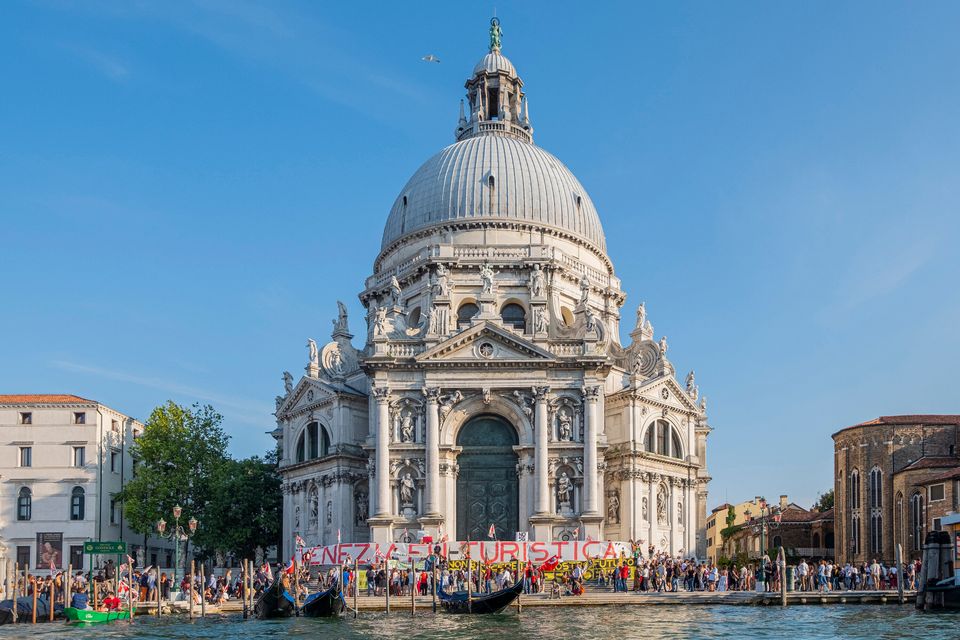
Italy’s agricultural sector has been threatened by the pandemic. With borders closed, seasonal workers from Eastern Europe could not enter the country to help harvest fruits and vegetables. In response, Italians, many of whom found themselves unemployed as a result of the crisis, went to work on farms, picking strawberries and preparing crates of produce for export.
“The agricultural sector is what allowed the Italian people to survive the lockdown,” Romano Magrini, a trade union manager at Coldiretti, Italy’s national farmers association, told HuffPost Italy. “There has been a rediscovery, even in a patriotic sense, of these products, their quality, freshness and authenticity.”
More than 40,000 Italians registered with the country’s main agricultural organizations. To address the shortage of manpower, in April they created platforms to match job-seekers with companies looking to fill empty positions.
It’s an experience, Magrini said, that could transform society for the better. “Now more than ever, we must invest in a sector that must guarantee as much food autonomy as possible in our country,” thus lowering the percentage of products that come from abroad, he said. This also means “greater air health, greater protection of the land and more work for all.”
“We have gold inside the house,” Magrini said. “We must know how to value it.”
Major cities, too, view the current crisis as an opportunity to reimagine the metropolitan experience. Many cities are hoping to encourage people to use alternate forms of transportation, not only to cut down on crowding on public transportation, but also to prevent a surge in car usage, with all the congestion and environmental ills that follow.
Bike usage across the country has soared — some 540,000 bicycles have been sold nationwide since shops reopened in early May — thanks in part to a government subsidy that offers city dwellers up to 500 euros toward the purchase of a traditional bike or an electric-assisted e-bike.
Milan has unveiled an ambitious plan to remake its streetscape to discourage car use and make it easier for people to walk and cycle, while still having room to spread out.
The city is taking over 22 miles of streets and creating temporary bike lanes and widened walkways for pedestrians. The speed limit for cars will be reduced in parts of the city, while bicycles and pedestrians will be given priority on certain streets.
“We worked for years to reduce car use. If everybody drives a car, there is no space for people, there is no space to move, there is no space for commercial activities outside the shops,” Milan’s deputy mayor, Marco Granelli, said. “Of course we want to reopen the economy, but we think we should do it on a different basis from before. We think we have to reimagine Milan in the new situation.”
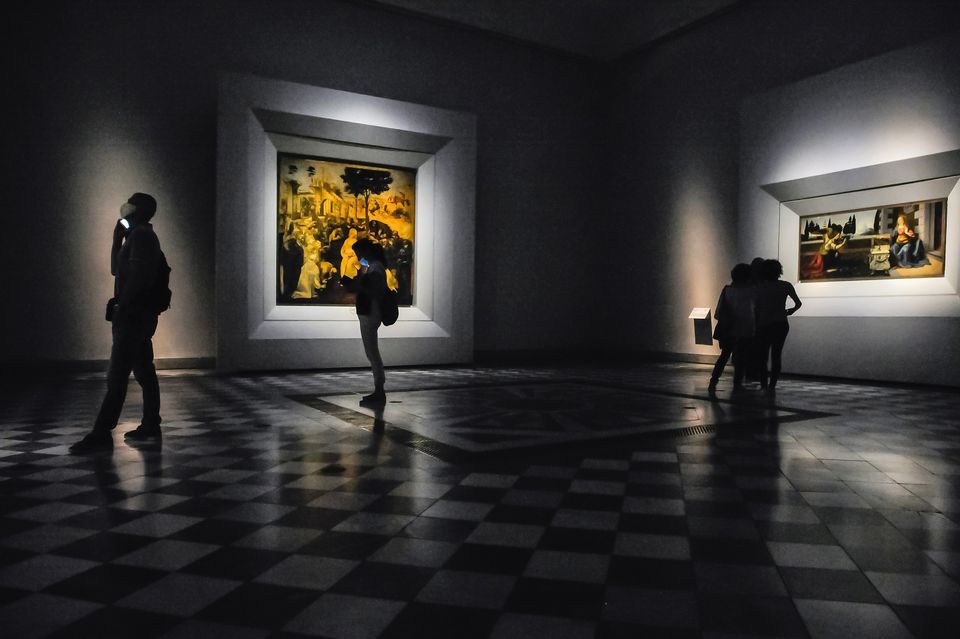
Still, the reopening has not been painless. Many business owners fear they will not be able to hold on if tourists do not return in large numbers, and if offices remain closed.
In May, the first week that bars and restaurants were allowed to reopen was a total flop, HuffPost Italy reported, with businesses reporting a 70% drop in revenue from pre-pandemic levels.
The situation has not improved much since then. Business revenue is still 50% below normal, due to a continued lack of tourists and office workers, according to FIPE, Italy’s leading bar, restaurant, and tourism association.
At Giolitti, a historic pastry and ice cream shop in the heart of Rome, customers are showing up in low numbers. “Very few compared to the pre-COVID period and to the same time last year,” said Giovanna Giolitti, who, together with her brother, sister, and 92-year-old mother Silvana, owns the business, which today also employs their children.
The story of Giolitti spans four generations, two World Wars and never a “more frightening and disturbing event than this,” Giovanna told HuffPost Italy. COVID-19 put a stop to everything and caused sales to drop by at least 65%.
The shop’s catering business is now “completely on hold,” she said, and its deals to supply sweets and ice cream to hotels, bed and breakfasts and restaurants have dried up. Normally, the shop hires eight to 10 workers to help out during the busy March-to-September season, but without increased demand, those jobs have evaporated.
A few days ago, Giovanna said, the first foreign tourists – eight Germans – came into the iconic patisserie. “We welcomed them with applause,” she said. “In different times, they would have blended in with the crowd. Now they stand out.”
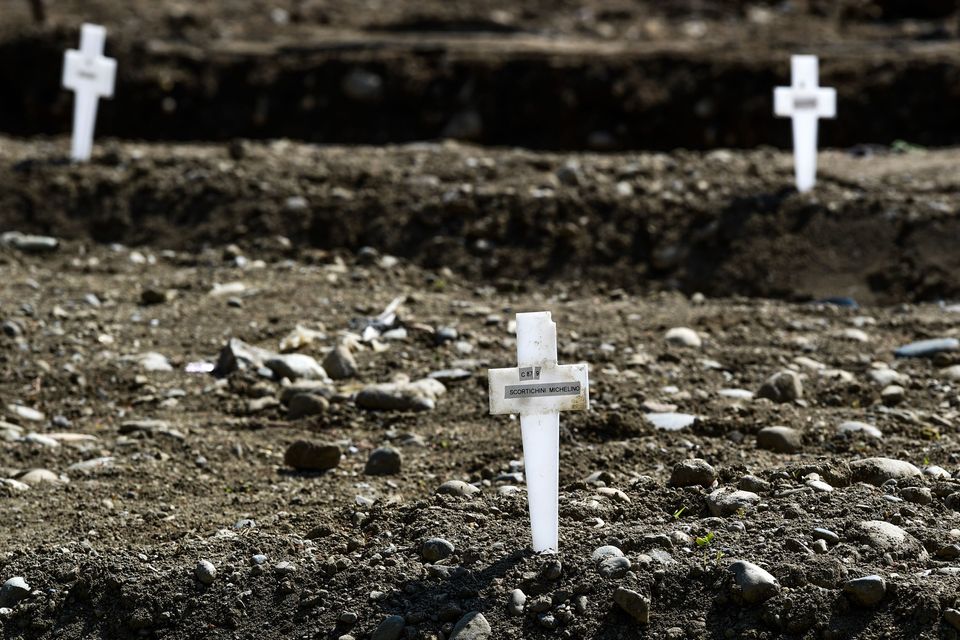
The pandemic’s scars linger in other ways as well — particularly in Lombardy, the original epicenter of Italy’s coronavirus outbreak. It has remained by far the worst hit of Italy’s 20 regions, accounting for about half of the country’s total deaths and most new infections.
Families of the victims in the region are demanding answers as to why the government did not act more swiftly or forcefully to contain the virus. Prosecutors from the city of Bergamo recently questioned Prime Minister Giuseppe Conte about the country’s response to the outbreak.
And in nearby Milan, families are trying to claim the remains of family members hastily buried in cemeteries without being properly identified during the chaos and confusion of the height of the pandemic.
Amid the stately gravestones and mausoleums in Maggiore cemetery, in a plot of land holding the remains of coronavirus victims whose bodies went unclaimed, the graves are marked with a small, white plastic cross.
With reporting from HuffPost Italy.
- Stay up to date with our live blog as we cover the COVID-19 pandemic
- 7 essential pieces of relationship advice for couples in quarantine
- What you need to know about face masks right now
- How to tell if you need to start doing online therapy
- Lost your job due to coronavirus? Here’s what you need to know.
- Parenting during the coronavirus crisis?
- The HuffPost guide to working from home
- What coronavirus questions are on your mind right now? We want to help you find answers.
-
Everyone deserves accurate information about COVID-19. Support journalism without a paywall — and keep it free for everyone — by becoming a HuffPost member today.
Also on HuffPost
from Huffington Post Australia Athena2 https://ift.tt/2VrcGUd

Comments
Post a Comment